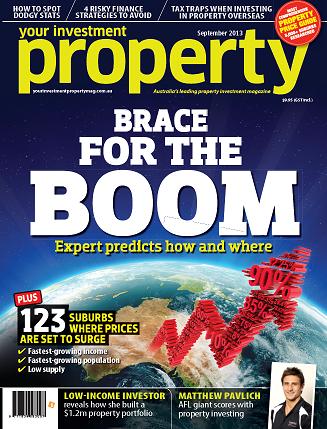As the state readies itself for summer, investors have to wonder if epic floods will return to drown property values. The answer is somewhat surprising
Things slammed to a higher gear when the animal carcasses began washing up on the Capricorn Coast, near Rockhampton. Australia’s beef capital was in the midst of another devastating flood and a muddied Fitzroy River was ravaging everything within its path.
Rockhampton residents reported seeing their homes and backyards drowned in metres of water as the river swelled in from all sides. Roads became paddle-ways, fences turned to driftwood and a startling reality hit: this didn’t seem like a place where anybody would want to be a property owner.
That was January this year, and though an ensuing ‘mud army’ came in to clean the mess, the damage to house values promised to take longer to fix – or would it?
The latest RP Data figures show that the city’s property values, in the ultimate irony, have not been severely affected by the flood.
Rockhampton property values in riverside areas such as Koongal, Depot Hill and the CBD appear to be no worse off than they were before the flood. Houses in the CBD have had just 2% shaved off their values in the 12 months to June, while the same period has seen Koongal and Depot Hill both witness a 12% increase in values.
It begs the question: how much of an impact do floods really have on property values?
Roma and Ipswich
Judy Fredriksen notes in the Ryder Report that the contrasting effect of flooding on growth in property values can be seen in Ipswich and Roma, which have seen severe flooding in recent years.
In Roma’s case, floods have come three summers in a row, but property values are still recording average annual growth figures of 13.4%.
The waters may have caused a lot of human misery in this Darling Downs town, but they haven’t taken away the tremendous coal seam gas fields nearby and the growth this has injected into the market. Even over the last year, Roma property values have punched above their phenomenal average annual growth figures, growing 14%.
Ipswich is a different case. Not affected by the resources boom as significantly, property values have not performed as strongly. June 2013 property prices in the Ipswich CBD were down 19% on June 2012 prices and while this could be an argument for a flood-induced price fall, the 19% drop is superseded by price falls in many Queensland areas where there has been no flooding at all. These would include suburbs in Cairns and the Sunshine Coast, such as Portsmith or Sunshine Beach, where values have dropped by more than 40%.
Fredriksen says that the recent price growth performance of flood affected regions, while different, all point to a singular theme.
“While floods and disasters invite strong emotional responses, rationality eventually kicks in and homes and businesses are rebuilt,” she says. “The baying public [may] demand that properties be protected in future disasters, but industry doesn’t stop because of floods.”
Bundaberg
If there was any doubt as to whether floods don’t invite as much of a drop in prices as most of us would think, perhaps the final showing of how property markets react comes from looking at a classic example – Bundaberg. This year, Australia’s sugar capital experienced arguably the worst flooding in the state. But did houses lose half their value?
With property prices growing fairly strong in a handful of suburbs, but falling by more than 10% in just two of the city’s 24 suburbs, the answer would appear to be ‘no’.
For Fredriksen it is proof that the damage to property values is overstated. “Following recent Queensland floods, towns that have been regularly inundated have had to face up to adversity and continued to deliver capital growth once they regained their footing,” she says.
For more stories like this, pick up a copy of Your Investment Property's September issue, available in newsagents now.

